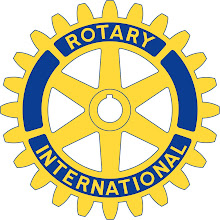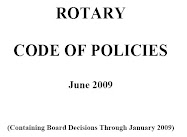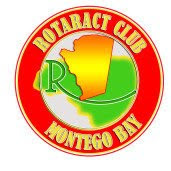 Montreal police officer Hugo Letellier delivers food to an orphanage in Croix-des-Bouquets, Haiti, on Jan. 26, 2010 as part of a United Nations program. Photo: LUCAS OLENIUK/TORONTO Star
Montreal police officer Hugo Letellier delivers food to an orphanage in Croix-des-Bouquets, Haiti, on Jan. 26, 2010 as part of a United Nations program. Photo: LUCAS OLENIUK/TORONTO Star I wanted to share a synopsis of the District 7020 relief efforts as I see it right now. As we move forward we will be redirecting our efforts as the needs dictate, and everyone's input is important and appreciated. (We will) post this on the Blog and we welcome your comments and recommendations as we consider and develop our next steps.
When the earthquake struck, the International Community undertook to provide relief for the victims through the normal response organizations such as, United Nations, USAID, US and other countries' military response teams, International Red Cross etc. I will call that group, "The Machine" for the purpose of this synopsis. Within days "the machine" was arriving in Port au Prince (the front door) and beginning the painful task of rescue and relief coordination. The magnitude of the destruction and the number of injured, buried and dead was enormous and dealing with that was the primary focus. They undertook to: Provide medical aid to the injured, dig from the rubble and save the ones that could be saved while there was time and opportunity. Remove and bury those that were not fortunate enough to survive to prevent disease. While that immediate need was addresses, "the machine" also began to put in place a temporary infrastructure to provide basic life necessities such as food, shelter, water and medical care.
While that was happening the Haitien People were doing the same, They were trying to provide medical aid to the injured family members and friends. They were trying where possible to dig from the rubble and save those that could be saved while there was time and opportunity. They were removing from the rubble their families and friends, and many of them were evacuating Port au Prince to distant communities in the country where they may have family or friends or was just safe, and that may not have been as badly damaged from the earthquake. Many of them took the sick and wounded to these communities for care as the immediate medical response in the Port au Prince area was nowhere near up to the challenge of the required capacity. The sick wounded and scared began to move back to the country!
That's where District 7020's Rotary Relief initiative comes in. We had 17 Rotary Clubs in Haiti and in excess of approximately 350 Rotarians. (last calculation, but its close). These Rotary clubs are spread throughout the country of Haiti with 5 of them being located where catastrophic destruction had taken place. Port au Prince, Delmas Airport, Petion-Ville, Carrefour, Jacmel were most seriously affected. There was damage in the other communities but not as catastrophic. The daily reports I have submitted describes our Disaster Relief response to Haiti. Our relief effort began with our first flight of medical Supplies and support going in on Friday. We went in "the back door" into the communities where we have Rotary Clubs and those that were not on the radar yet of "the machine" but to where Haitians were evacuating to. This has continued as you know every day since we started. 57 flights as of yesterday and approximately 55,000 lbs of medical supplies. The numbers of the sick and wounded numbers arriving in these communities has been going up every day, and the challenges they face has begun to change from immediate medical aid to shelter and life sustenance needs.
"The machine" has now dealt with its initial priorities in Port au Prince and the surrounding most affected areas and is now building the infrastructure for a comprehensive relief and recovery effort and is now and moving deeper into the country with its relief efforts.
Rotary must now re-evaluate what we should be doing next as far as our relief effort is concerned. Some of the issues we must consider are:
The ballooning population growth in these small communities is beginning to tax the basics of life, such as shelter, food, water, education, not to mention the medical aid. What should Rotary be doing about this? In the past this has been our community focus?
The health and strength of our Rotary Clubs is at risk. If we are sick, wounded and tired it makes it very difficult for us to care for others. How do we help sustain and support our Haitian Rotary Clubs and Rotarians?
What role should we play as international aid begins to come into our communities? Should we do as we have done in the past and find a community need or should we specialize and pick one or two main focus area that we should concentrate on?
How do we partner with other international organization, many of whom are specialists in one area. Do we help coordinate that with them or do we let them do that and find our own focus area?
How do we continue our fund raising and what do we do with the funds we receive? How long should we plan the cycle of fund raising and spending on this initiative? How much do we want to raise and spend and on what?
Orphaned Children and misplaced families need to be supported by some sort of infrastructure. Is that something we should be thinking about.
The mental health of the suffering in this nation is being challenged, What role do we have in that?
Construction quality and the need to rebuild. Should we be educating people on proper construction practices and should we reconsider our bricks and mortar rule in this instance?
These are just thoughts, and I welcome your comments and ideas. Many of you have experiences that will help us make sound decisions. Please share them.
Rotary Shares. Yes ! Yes ! Yes!
I thought I would get that in! I am meeting with some of the Task Force team on Sunday in Pignon to discuss the current status and our efforts in the Northern Region, and we will be meeting with Claude Surena and the Haiti Rotary Leadership on Wednesday next week in Port au Prince. PRID Barry, DGE Diana White, and RIDE John Smarge will be at the Wednesday meeting.It is most important that we listen to our fellow Rotarians on the ground in Haiti and follow their advice.
PDG Dick







No comments:
Post a Comment